Chrysler 2008 Annual Report Download - page 124
Download and view the complete annual report
Please find page 124 of the 2008 Chrysler annual report below. You can navigate through the pages in the report by either clicking on the pages listed below, or by using the keyword search tool below to find specific information within the annual report.-
 1
1 -
 2
2 -
 3
3 -
 4
4 -
 5
5 -
 6
6 -
 7
7 -
 8
8 -
 9
9 -
 10
10 -
 11
11 -
 12
12 -
 13
13 -
 14
14 -
 15
15 -
 16
16 -
 17
17 -
 18
18 -
 19
19 -
 20
20 -
 21
21 -
 22
22 -
 23
23 -
 24
24 -
 25
25 -
 26
26 -
 27
27 -
 28
28 -
 29
29 -
 30
30 -
 31
31 -
 32
32 -
 33
33 -
 34
34 -
 35
35 -
 36
36 -
 37
37 -
 38
38 -
 39
39 -
 40
40 -
 41
41 -
 42
42 -
 43
43 -
 44
44 -
 45
45 -
 46
46 -
 47
47 -
 48
48 -
 49
49 -
 50
50 -
 51
51 -
 52
52 -
 53
53 -
 54
54 -
 55
55 -
 56
56 -
 57
57 -
 58
58 -
 59
59 -
 60
60 -
 61
61 -
 62
62 -
 63
63 -
 64
64 -
 65
65 -
 66
66 -
 67
67 -
 68
68 -
 69
69 -
 70
70 -
 71
71 -
 72
72 -
 73
73 -
 74
74 -
 75
75 -
 76
76 -
 77
77 -
 78
78 -
 79
79 -
 80
80 -
 81
81 -
 82
82 -
 83
83 -
 84
84 -
 85
85 -
 86
86 -
 87
87 -
 88
88 -
 89
89 -
 90
90 -
 91
91 -
 92
92 -
 93
93 -
 94
94 -
 95
95 -
 96
96 -
 97
97 -
 98
98 -
 99
99 -
 100
100 -
 101
101 -
 102
102 -
 103
103 -
 104
104 -
 105
105 -
 106
106 -
 107
107 -
 108
108 -
 109
109 -
 110
110 -
 111
111 -
 112
112 -
 113
113 -
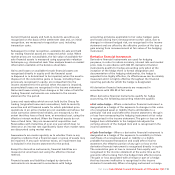 114
114 -
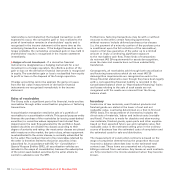 115
115 -
 116
116 -
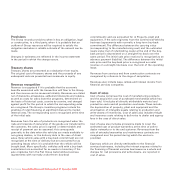 117
117 -
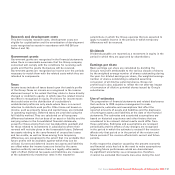 118
118 -
 119
119 -
 120
120 -
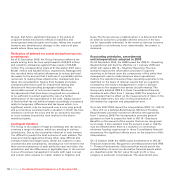 121
121 -
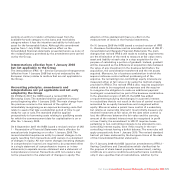 122
122 -
 123
123 -
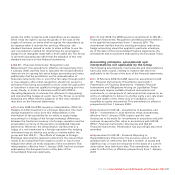 124
124 -
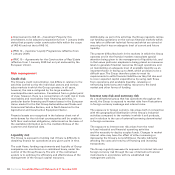 125
125 -
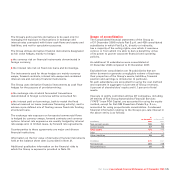 126
126 -
 127
127 -
 128
128 -
 129
129 -
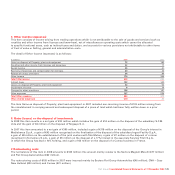 130
130 -
 131
131 -
 132
132 -
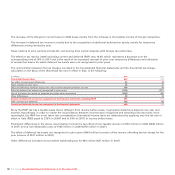 133
133 -
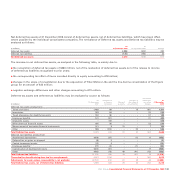 134
134 -
 135
135 -
 136
136 -
 137
137 -
 138
138 -
 139
139 -
 140
140 -
 141
141 -
 142
142 -
 143
143 -
 144
144 -
 145
145 -
 146
146 -
 147
147 -
 148
148 -
 149
149 -
 150
150 -
 151
151 -
 152
152 -
 153
153 -
 154
154 -
 155
155 -
 156
156 -
 157
157 -
 158
158 -
 159
159 -
 160
160 -
 161
161 -
 162
162 -
 163
163 -
 164
164 -
 165
165 -
 166
166 -
 167
167 -
 168
168 -
 169
169 -
 170
170 -
 171
171 -
 172
172 -
 173
173 -
 174
174 -
 175
175 -
 176
176 -
 177
177 -
 178
178 -
 179
179 -
 180
180 -
 181
181 -
 182
182 -
 183
183 -
 184
184 -
 185
185 -
 186
186 -
 187
187 -
 188
188 -
 189
189 -
 190
190 -
 191
191 -
 192
192 -
 193
193 -
 194
194 -
 195
195 -
 196
196 -
 197
197 -
 198
198 -
 199
199 -
 200
200 -
 201
201 -
 202
202 -
 203
203 -
 204
204 -
 205
205 -
 206
206 -
 207
207 -
 208
208 -
 209
209 -
 210
210 -
 211
211 -
 212
212 -
 213
213 -
 214
214 -
 215
215 -
 216
216 -
 217
217 -
 218
218 -
 219
219 -
 220
220 -
 221
221 -
 222
222 -
 223
223 -
 224
224 -
 225
225 -
 226
226 -
 227
227 -
 228
228 -
 229
229 -
 230
230 -
 231
231 -
 232
232 -
 233
233 -
 234
234 -
 235
235 -
 236
236 -
 237
237 -
 238
238 -
 239
239 -
 240
240 -
 241
241 -
 242
242 -
 243
243 -
 244
244 -
 245
245 -
 246
246 -
 247
247 -
 248
248 -
 249
249 -
 250
250 -
 251
251 -
 252
252 -
 253
253 -
 254
254 -
 255
255 -
 256
256 -
 257
257 -
 258
258 -
 259
259 -
 260
260 -
 261
261 -
 262
262 -
 263
263 -
 264
264 -
 265
265 -
 266
266 -
 267
267 -
 268
268 -
 269
269 -
 270
270 -
 271
271 -
 272
272 -
 273
273 -
 274
274 -
 275
275 -
 276
276 -
 277
277 -
 278
278 -
 279
279 -
 280
280 -
 281
281 -
 282
282 -
 283
283 -
 284
284 -
 285
285 -
 286
286 -
 287
287 -
 288
288 -
 289
289 -
 290
290 -
 291
291 -
 292
292 -
 293
293 -
 294
294 -
 295
295 -
 296
296 -
 297
297 -
 298
298 -
 299
299 -
 300
300 -
 301
301 -
 302
302 -
 303
303 -
 304
304 -
 305
305 -
 306
306 -
 307
307 -
 308
308 -
 309
309 -
 310
310 -
 311
311 -
 312
312 -
 313
313 -
 314
314 -
 315
315 -
 316
316 -
 317
317 -
 318
318 -
 319
319 -
 320
320 -
 321
321 -
 322
322 -
 323
323 -
 324
324 -
 325
325 -
 326
326 -
 327
327 -
 328
328 -
 329
329 -
 330
330 -
 331
331 -
 332
332 -
 333
333 -
 334
334 -
 335
335 -
 336
336 -
 337
337 -
 338
338 -
 339
339 -
 340
340 -
 341
341 -
 342
342 -
 343
343 -
 344
344 -
 345
345 -
 346
346 -
 347
347 -
 348
348 -
 349
349 -
 350
350 -
 351
351 -
 352
352 -
 353
353 -
 354
354 -
 355
355 -
 356
356
 |
 |
Fiat Group Consolidated Financial Statements at 31 December 2008 123
goods, the entity recognise such expenditure as an expense
when it has the right to access the goods. In the case of the
supply of services, an entity shall recognise the expenditure as
an expense when it receives the services. Moreover, the
standard has been revised in order to allow entities to use the
unit of production method for determining the amortisation
charge for an intangible asset with a finite useful life. The Group
is currently assessing any effect that the adoption of this new
standard may have on the financial statements.
IAS 39 –
Financial Instruments: Recognition and
Measurement
: this amendment, effective retrospectively from
1 January 2009, clarifies how to calculate the revised effective
interest rate on ceasing fair value hedge accounting and notes
additionally that the prohibition on the reclassification of
financial instruments into or out of the fair value through profit
or loss category after initial recognition should not prevent a
derivative from being accounted for at fair value through profit
or loss when it does not qualify for hedge accounting and vice
versa. Finally, in order to eliminate conflict with IFRS 8 –
Operating Segments
, it removes the reference to designating
and documenting hedges at sector level. The Group is currently
assessing any effect that the adoption of this new standard
may have on the financial statements.
On 3 July 2008 the IFRIC issued an interpretation, IFRIC 16 –
Hedges of a Net Investment in a Foreign Operation
. The main
change expected to arise from this interpretation is the
elimination of the possibility for an entity to apply hedge
accounting for a hedge of the foreign exchange differences
between the functional currency of a foreign operation and the
presentation currency of the parent’s consolidated financial
statements. Moreover, the interpretation clarifies that in a
hedge of a net investment in a foreign operation the hedging
instrument may be held by any entity or entities within the
group and that IAS 21 –
The effects of changes in Foreign
Exchange rates
shall be applied to determine the amount that
needs to be reclassified from equity to profit or loss for the
hedged item when an entity disposes of the investment. This
interpretation, effective from 1 January 2009, had not yet been
endorsed by the European Union at the date of this
Consolidated financial statements.
On 31 July 2008, the IASB issued an amendment to IAS 39 –
Financial Instruments: Recognition and Measurement
which is
to be applied retrospectively from 1 January 2010 .The
amendment clarifies how the existing principles underlying
hedge accounting should be applied in particular situations.
As of the date of this Consolidated financial statements, the
amendment had not yet been endorsed by the European Union.
Accounting principles, amendments and
interpretations not applicable by the Group
The following amendments, improvements and interpretations
have also been issued, relating to matters that were not
applicable to the Group at the date of the financial statements:
On 14 February 2008 the IASB issued an amendment to IAS
32 –
Financial Instruments: Presentation
and to IAS 1
Presentation of Financial Statements - Puttable Financial
Instruments and Obligations Arising on Liquidation
. These
amendments require puttable financial instruments and
instruments, or components of instruments that impose on an
entity an obligation to deliver to another party a pro rata share
of the net assets of the entity only on liquidation, to be
classified as equity instruments. This amendment is effective
prospectively from 1 January 2009.
Improvement to IAS 28 –
Investments in Associates
, and
IAS 31 –
Investments in Joint Ventures
: these amendments,
effective from 1 January 2009, require specific new
disclosures to be made for investments in associates and joint
ventures measured at fair value in accordance with IAS 39.
IFRS 7
Financial Instruments: Disclosures
and IAS 32:
Financial Instruments: Presentation
has accordingly also been
amended.
Improvement to IAS 29 –
Financial Reporting in
Hyperinflationary Economies
: the previous version of the
standard did not reflect the fact that a number of assets and
liabilities may or must be measured on the basis of a current
value rather than historical value. This amendment, made in
order to reflect this, is effective prospectively from 1 January
2009.
